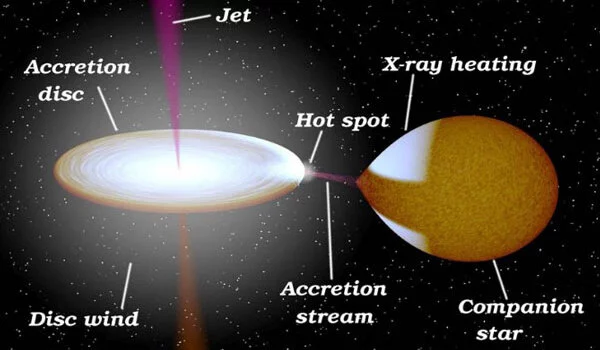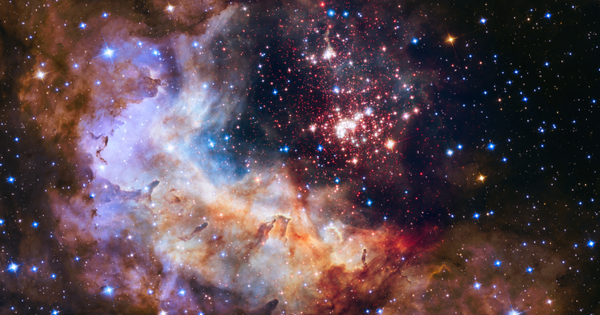Indian astronomers examined the timing and spectral properties of an X-ray transient known as Swift J1728.9-3613 using NASA’s Swift telescope and the Neutron star Interior Composition Explorer (NICER) instrument onboard the International Space Station. Their findings indicate that this transient is a black hole X-ray binary. Their findings were published in a paper on arXiv.org.
X-ray binaries (XRBs) are made up of a normal star or a white dwarf that transfers mass to a compact neutron star or a black hole. Most black hole XRBs and some neutron star XRBs exhibit transient events characterized by X-ray outbursts.
BHXBs are binary systems composed of a black hole orbited by a stellar companion, typically a low-mass, evolved star. X-rays are generated in BHXBs by material accreting from a secondary companion star onto a black hole primary. When the X-ray flux increases significantly, such systems are usually detected in outbursts.
In this study, we used all available archival [NICER] data during the outburst between MJD 58512.64 and MJD 58657.00, having a total exposure of ∼175 ks, to study the evolution of the timing and spectral properties and understand the nature of the source…. We used the monitoring data of BAT to study the evolution of X-ray flux of Swift J1728.9–3613 in 15–50 keV.
Debasish Saha
Swift J1728.9-3613 (also known as MAXI J1728-360) is a Galactic X-ray transient discovered by the Swift Burst Alert Telescope on January 28, 2019. (BAT). Following observations of this transient indicated that it could be an accreting pulsar or a black hole.
Therefore, in order to unveil the true nature of Swift J1728.9–3613, a team of astronomers led by Debasish Saha of Indian Institute of Science Education and Research Bhopal in Bhauri, India, has examined this transient using Swift and NICER.
“In this study, we used all available archival [NICER] data during the outburst between MJD 58512.64 and MJD 58657.00, having a total exposure of ∼175 ks, to study the evolution of the timing and spectral properties and understand the nature of the source…. We used the monitoring data of BAT to study the evolution of X-ray flux of Swift J1728.9–3613 in 15–50 keV,” the researchers explained.

The study found that outburst of Swift J1728.9–3613 was characterized by a fast rise and a very slow decay of flux, typical for outbursts of X-ray binaries. Moreover, by analyzing the timing evolution, the astronomers identified a “q” shaped track in the hardness-intensity diagram (HID) traversing in the anticlockwise direction. This is commonly observed during the outburst of black hole X-ray binaries.
A partial hysteresis has also been detected in the root mean square-intensity diagram (RID). This is another well-known phenomenon observed in black hole transients, according to the researchers. The study also discovered two quasi-periodic oscillations (QPOs) and a small-scale reflare during the soft intermediate state of the outburst Swift J1728.9-3613.
In summarizing the findings, the authors of the paper stated that all of the obtained results point to Swift J1728.9-3613 being BHXB. They estimate that the black hole in this system has a mass of about 4.6 solar masses, based on the distance to Swift J1728.9-3613, which is approximately 32,600 light years.
















